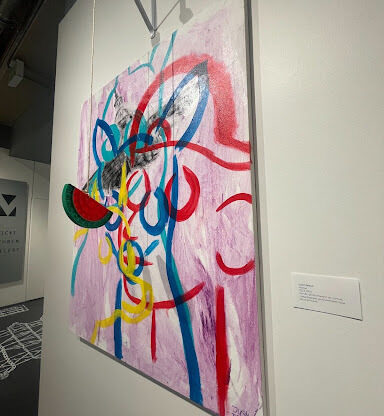A constant discussion found in film circles is one surrounding what it means for a film to be a “classic.” Films of this caliber require a certain timelessness, a certain transcendent quality, in order to stand out as masterful in an industry where hundreds of works are released each year and talent is everywhere. Such a movie has to be more than special; it has to be profound in the context of the other films that surround. In 1982, “Blade Runner” was released to little fanfare and split critical opinion. Within the 35 years since its release, the film has become the definition of what it means to be a classic, influencing an entire generation of science-fiction storytelling and standing the test of time as a visual and narrative monument to the power of cinema. To live up to such a standard is no easy task, yet the sequel “Blade Runner 2049,” a film few asked for or ever expected to be made, stands comfortably next to its predecessor as a dizzyingly beautiful and deeply intelligent masterpiece.
Set 35 years after the original, “2049” follows stoic and efficient Officer K (Ryan Gosling, “Drive”) who unearths a long buried secret that threatens to alter the destiny of humanity forever. K is, of course, a blade runner, a cop whose only duty is to hunt down and “retire” rogue replicants, extremely human-like androids designed to serve as slaves both on Earth and on the many off-world colonies to which the planet now lays claim. The twist here is the film abandons questioning whether or not K is himself a replicant, as was the looming question surrounding the original film’s protagonist, Rick Deckard (Harrison Ford, “Star Wars”). The film lets you know almost immediately that K is of the very same breed that he hunts, yet a sad and lost persona keys us into the fact that he too is questioning what it means to be alive. In order to understand both the secret he’s discovered and himself, K embarks on a quest to find the missing Deckard and prevent ruthless and strange new corporate overlord Niander Wallace (Jared Leto, “Suicide Squad”) and his cold-blooded replicant assistant Luv (Sylvia Hoeks, “The Best Offer”) from using the secret to their own advantage.
In order to live up to the original film, the sequel needed to achieve greatness in three primary categories: narrative, characterization and visual beauty. The film not only meets the criteria for excellence the original set in these areas, but even surpasses it on occasion.
The narrative is an excellent continuation of the lore laid down previously, with the complexity of its world living and breathing just as wondrously as it did in 1982. The questions the original posed about what it means to be human are exchanged here for ones about what it means to live, love and accept and the concept works perfectly.
Subplots bring out not only the strengths of the overall narrative, but of the characters themselves. As K plays house with his hologram lover Joi (Ana de Armas, “Hands of Stone”), we see his insecurities on display, her adoration of him flowing in full force. The film takes this complex relationship and makes us question the nature of a life, of what it means to love something. Despite Joi being a product, we never doubt her love for Gosling’s mopey gunslinger. This is due to the nuance of the script and the power of the performances from Gosling and de Armas, who both seem more human than most actually human characters seem in many films these days. Other subplots, including scenes with K’s gritty captain Joshi (Robin Wright, “House of Cards”) and tender but dangerous replicant Sapper (Dave Bautista, “Guardians of the Galaxy”) flesh out the world while providing even more believable and astonishing performances. In terms of the main plot, Ford is at the top of his game returning as the embittered and world-weary Deckard, turning in one of the rawest and emotional performances of his career. Other than Gosling, Ford’s only match is relative newcomer Hoeks, who turns in a frightening and intense performance as a replicant tortured by her fear and love of her creator Wallace. Leto is perhaps the one negative of the film; his performance is perfectly fine, but feels rote and on the nose compared to his co-stars.
While the acting and script may be stellar, what really sets this film apart is its superb craft behind the camera. Director Denis Villeneuve (“Sicario”), coming hot off of last year’s stunning “Arrival,” proves he is perhaps the best director working today by turning into exemplary work here, pacing the film and framing it in a patient way (despite a nearly three hour runtime) that few others could have achieved. However, his work would have little effect if not for the skill of his cinematographer Roger Deakins (“Skyfall”), whose hauntingly beautiful visual work with this film should unquestionably earn him a long overdue Oscar. Also notable is Hans Zimmer’s (“Dunkirk”) booming and industrial yet moving soundtrack, a distinct departure from the swaying synths of its predecessor. While it still can’t match the haunting and fascinating feel of the original (probably no film ever will), all of this film’s strengths add up to a profoundly moving experience. As the astounding pastiches of action and mystery enters our vision and we hear the whir of machines above our heads, we are reminded what it means to go to the cinema and how utterly important that action is. “Blade Runner 2049” is a testament to that power.











